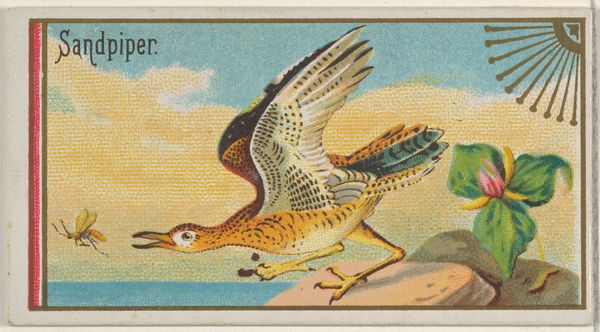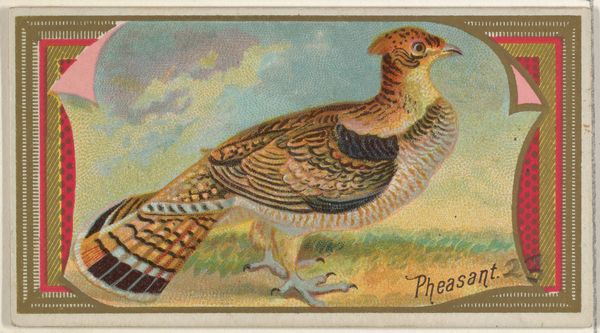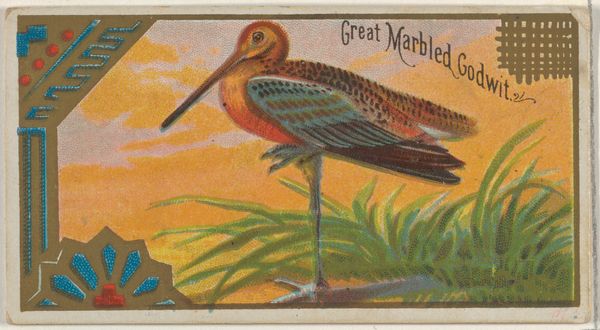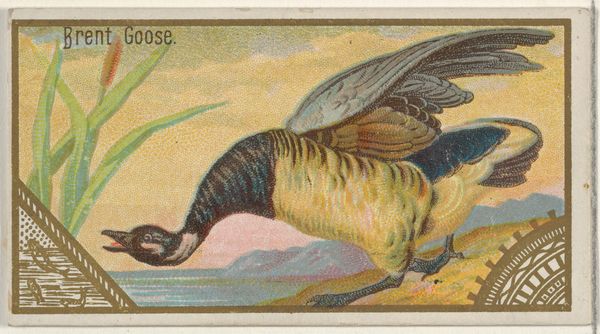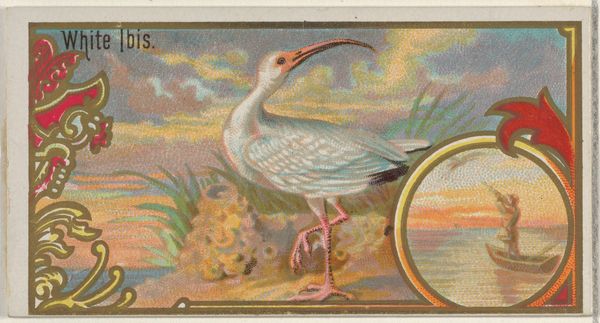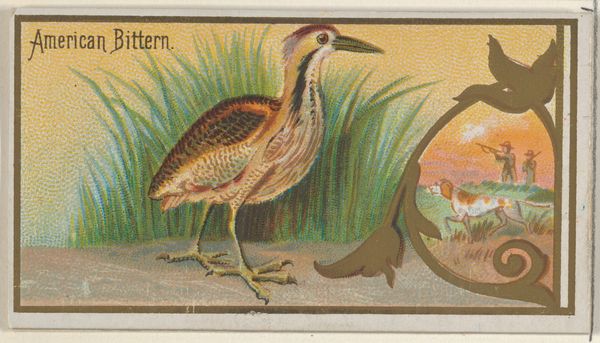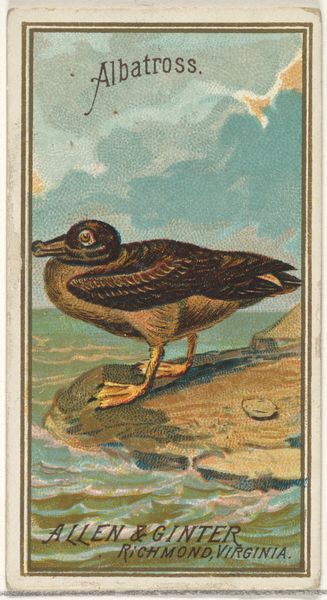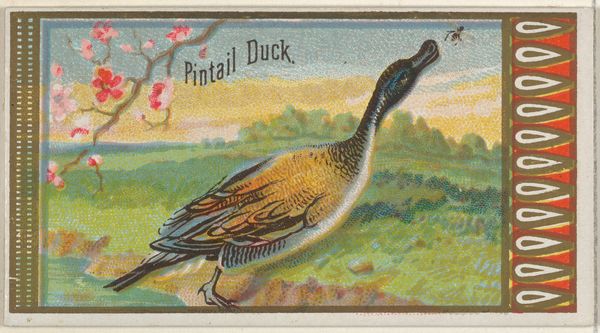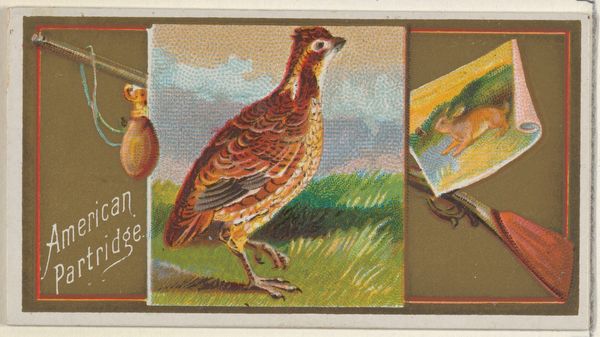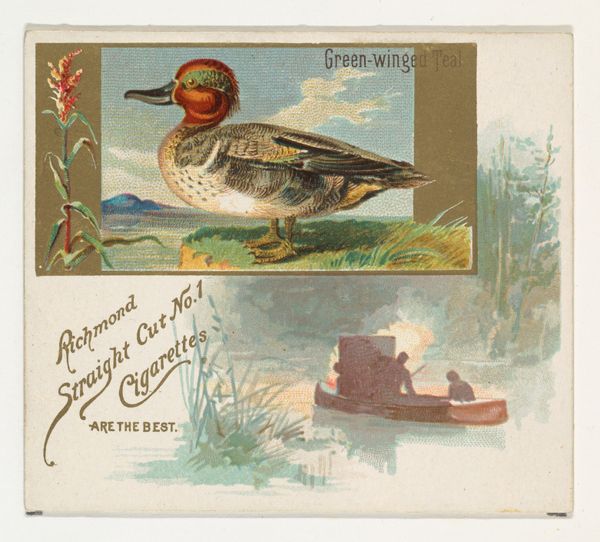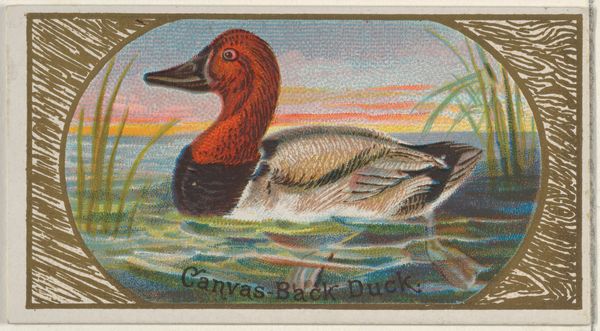
Green-winged Teal, from the Game Birds series (N13) for Allen & Ginter Cigarettes Brands 1889
drawing, coloured-pencil, print, watercolor
drawing
coloured-pencil
impressionism
bird
watercolor
coloured pencil
watercolour illustration
watercolor
Dimensions: Sheet: 1 1/2 x 2 3/4 in. (3.8 x 7 cm)
Copyright: Public Domain
Curator: Here we have a fascinating little piece titled "Green-winged Teal, from the Game Birds series (N13) for Allen & Ginter Cigarettes Brands," dating back to 1889. It’s currently housed here at the Metropolitan Museum of Art. Editor: Immediately, the meticulous rendering strikes me. It's such a delicate balance, the precise details against this impressionistic wash in the background. There's a tension between the objective and the ethereal. Curator: It is a chromolithograph, printed with watercolor and colored pencil. These cards were included in cigarette packs – can you imagine? A miniature collectible, mass produced yet displaying such fine detail. It begs the question of value, wouldn’t you say? What constitutes ‘art’ here? Editor: Precisely! The materiality is key: it is literally promotional material. But look at how closely the artist observes and records the coloration of the duck, down to the irridescence of its head feathers. The artist transformed mundane consumer objects into moments of beauty amidst daily life. And if the source of watercolor used had anything to do with duck plumage itself, this speaks even further about material-culture interplay when discussing what value looks and feels like. Curator: And the context! This image speaks volumes about late 19th century America: the rise of consumer culture, burgeoning interest in natural history, and, of course, the pervasive nature of tobacco consumption. Editor: It’s interesting how they positioned nature itself, even wild creatures like ducks, into an object intended for consumption and eventual discard. Yet that careful application of color creates form. Curator: So, the semiotic play between natural and artificial, consumption and observation… It elevates the everyday, turning a fleeting moment with this duck into something of lasting aesthetic interest. It is as though nature herself became commodified. Editor: And this layering speaks volumes. The more one looks at the piece, more conversations, some expected, some surprising arise, and new ones begin still. The question remains whether mass producing is a limitation rather than expansive capability. Curator: Yes, this small piece truly invites us to consider the layers beneath surface appearance. Editor: Agreed, and how humble materials and artistry together shift social perception through both access and vision.
Comments
No comments
Be the first to comment and join the conversation on the ultimate creative platform.
